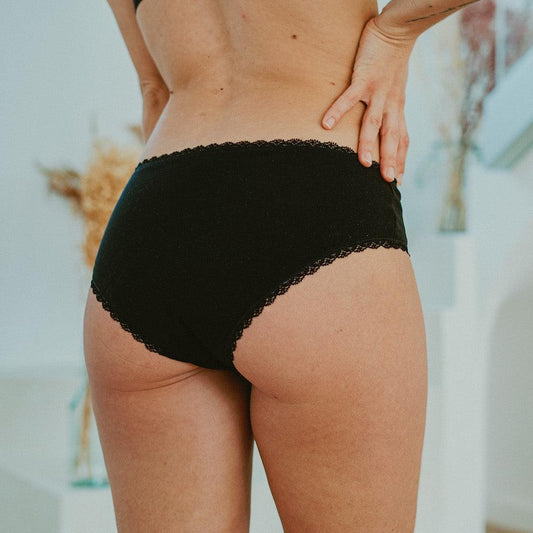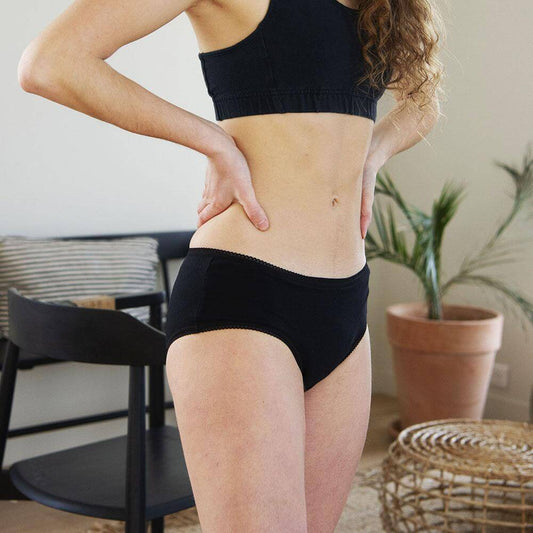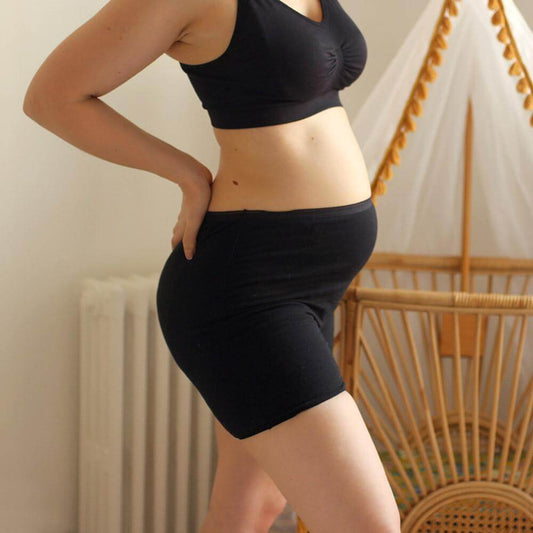Disposable pads and tampons are still the best-selling menstrual protection. Every second around the world, 1447 sanitary pads are used, and as many are subsequently thrown away. In France, over 2 billion tampons and menstrual pads are thrown away every year. Conventional disposable sanitary protection therefore represents a colossal amount of waste and therefore environmental pollution, but it is also a potential risk to your health, since despite the warnings and recommendations issued in recent years against these brands, but also by the government, they still contain chemical substances harmful to the environment and your health.
Do conventional sanitary products really represent an environmental risk?
Conventional sanitary protection pollutes throughout its life cycle, from the manufacturing process to disposal at landfill sites.
First of all, the two main materials needed to manufacture conventional sanitary protection are cotton and plastic. Both require large quantities of water and raw materials for their production, as well as non-renewable fossil resources. After rice and wheat, cotton is the most water-intensive crop. To give you an idea of the scale, 1 kg of cotton uses between 7,000 and 29,000 liters of water, which is equivalent, on average, to one shower a day for a year for just one kilo of cotton. What's more, conventional, non-organic cotton cultivation uses numerous pesticides and chemicals. For example, cotton cultivation alone requires 25% of all insecticides used worldwide. Cotton is also treated and bleached with chlorine and numerous chemical additives that pollute water, groundwater and soil. And again, we're only taking into account the resources needed to produce the raw materials, not the manufacture of conventional sanitary protection itself.
Then, once they've been used, sanitary pads and their packaging are thrown in the garbage can, at best. They will then be incinerated or landfilled, as they cannot be recycled (with the exception of certain types of packaging), once again creating pollution for the soil and air, as well as greenhouse gas emissions. According to ADEME, tampons and menstrual pads account for 13% of residual household waste, along with diapers, wipes, disposable tissues and so on. In the worst-case scenario, these products are flushed down the toilet (or into the environment), and the micro-particles of plastic and other chemical substances they contain are not all treated by wastewater treatment plants, so they end up polluting soil and waterways, while also impacting on the biodiversity of these environments. In fact, the plastic in conventional sanitary pads takes around 500 years to degrade, while a sanitary napkin takes between 500 and 800 years to decompose completely, while the pads themselves have only been used for a few hours a day. For all these reasons, sanitary pads frequently end up in the environment, and are the fifth most common type of single-use plastic waste found on beaches.
Is conventional sanitary protection a health hazard?
Conventional menstrual protection does indeed present a health risk, due to its composition. In fact, many chemical substances have been found in conventional sanitary pads (phthalates, glyphosate, dioxins, etc.), and even if in theory they rarely or never exceed health thresholds, they are directly absorbed through the skin. Firstly, this can cause irritation, intolerance or even allergies, but some of these substances are endocrine disruptors that can have a negative effect on procreation, hormonal dysfunction, the immune system and sometimes even cancer. What's more, pads and tampons can cause toxic shock. Nevertheless, even though the latest ANSES report recommends that manufacturers improve the quality of their products, companies are still under no obligation to reveal their manufacturing processes or display their composition, which does not encourage them to be transparent.
What alternatives are there to tampons and pads?
Even so, there are many reusable solutions available today that are healthy for both you and the environment. These include cups, washable pads and menstrual pants, which have an average lifespan of 5 to 10 years. These solutions considerably reduce menstrual waste, and although more expensive upfront, they pay for themselves fairly quickly over time. To calculate the savings you'll make with our menstrual pants, use our savings calculator.
At Elia, our menstrual pants are Oeko-Tex and Origine France Garantie certified. They are made from certified organic cotton, and the absorbent fabric is eucalyptus fiber. We chose this material rather than bamboo fiber because bamboo requires much more water to produce and is a victim of massive deforestation. Finally, our printing is climate-neutral, as we offset the amount of greenhouse gases emitted during the printing of our communication materials.










